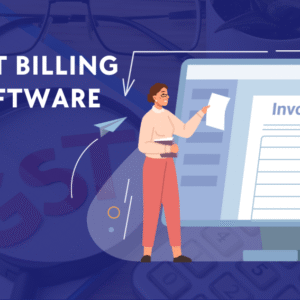Your business needs to grow. But maybe you do not have all it takes and you are considering additional capital. Where can you turn to? Still, it may not be for growth purposes. May you are awaiting the payment of invoices but you need to take advantage of an opportunity in which time factor matters… where can you turn to? Still, maybe you need to upgrade your equipment in order to be more efficient, or perhaps cope with the competition.
Maybe you need to finance a repair of equipment that is so expensive such that it can affect the operating cash of the business. Or maybe you deal with contracts and it takes time for payment to be processed. You cannot close down operations and wait for payments. You may have a business idea that requires financing. These are just some of the conditions that demand funds urgently.
But the question is – where can you get the needed funds? Well, there are so many sources you may consider. You may take a traditional loan from money lending institutions, seek venture capital or business angels, or seek help from family members. Whichever the case, you are going to borrow!
Loans have become a place of refuge for many individuals. However, you may need to be very careful while borrowing. You need to compare loans and pick the one lowest interest but perfectly fit your conditions like Bugis Credit online. This way you will be able to reap maximum advantage from the borrowed amount. In our discussion today, we will focus on a specific form of borrowing – asset-based loans. By the end of the discussion we will have the answer to the question – how much can one borrow based on the asset. We begin…
Asset-Based Loans
These are types of loans given with the assets serving as collateral. The businesses are allowed to borrow regularly in order to finance their operations or to take advantage of investment opportunities. Nevertheless, the assets are supposed to be liquid and include inventory, accounts receivable and equipment.
How much can you borrow? Well, in asset-based lending lenders will determine the amount they can loan to you based on the prevailing market worth of the assets used as collateral. Simply put, the amount you can borrow depends on the worth of the assets. However, there are cases where lenders only agree to offer loans slightly less than the value of the assets. Basically, the business can be allowed to borrow 75-80% of the total worth of its account receivables. If lending is based on inventory or equipment, the amount allowed is often 50%.
Evidently, the tangible assets play two very significant roles. Firstly, we have already mentioned that they help to establish the borrowing base. Secondly, the tangible assets are what the lenders hold as collateral for the borrowed amount. The lenders want to be assured that in the end they are going to recover their money and that is the assets of the business is just so important.
In case you end up defaulting, the lenders will seize the assets and use them to recover their losses. So if you want these loans, make sure you have quality assets that lenders can find attractive. Why do businesses opt for them? The following section will consider that.
Why they Asset-Based Loans Are Often Preferred
We started by stating some of the reasons why you may opt for loans. The scenarios we considered apply in nearly all businesses. But then let us break them down into asset-based loans specifically. In many cases, borrowers turn to this form of financing because of being denied approval in traditional loans. Does this mean they are for the less-privileged people or businesses? Absolutely no! In fact, statistics show asset-based loans are one of the best. The following three reasons show why you opt for them:
- You may lack a good credit history. In order to be approved for traditional loans, lenders examine your credit history. If it is poor or not established, you may not qualify for the loans. In case you are considered, the interest rates often so high. But when it comes to asset-based loans, the cash flow history of your business is not important, neither is your credit score or the business profitability. What matters is the value of the assets used as collateral. Is your business younger? Then turn to asset-based loans. It is the based financing option in this regard.
- The Grow is faster. In case your business is growing at a very faster rate, it may be necessary to seek funds in order to finance the costs that come with the growth. Even thou you need working capital, it may be so difficult to be approved for many types of business loans because your business just started. Rather than focusing on the history of your business, as other lenders often do, an asset-based loan lender focus on the future potential of your business. Of interest to them are your sales as well as cash flow projections rather than past cash flow and the credit score of the business.
- It involves fewer risks compared to traditional loans. Generally, traditional lenders will require the borrower to sign a guarantee or even put up security, such as a home, to ensure that they can recover their money in case you default. Think of the personal risk you can get involved in. In case you are unable to finish payments for whatever reason, you are going to lose your home. In contrast, asset-based lenders are only interested in some specific types of assets in your balance sheet as collateral. For this reason, there is no personal risk, or there is, then very little.
There are so many benefits you can reap from asset-based loans. However, they are other people’s claims from the business. Make sure you pay them off in time.
The Bottom Line
By way of review, how much can one borrow based on the asset? While there is no set limit, the value of your assets plays a significant role. The business can be allowed to borrow 75-80% of the total worth of its account receivables. If lending is based on inventory or equipment, the amount allowed is often 50%. These loans are as beneficial in a number of ways as discussed above.






